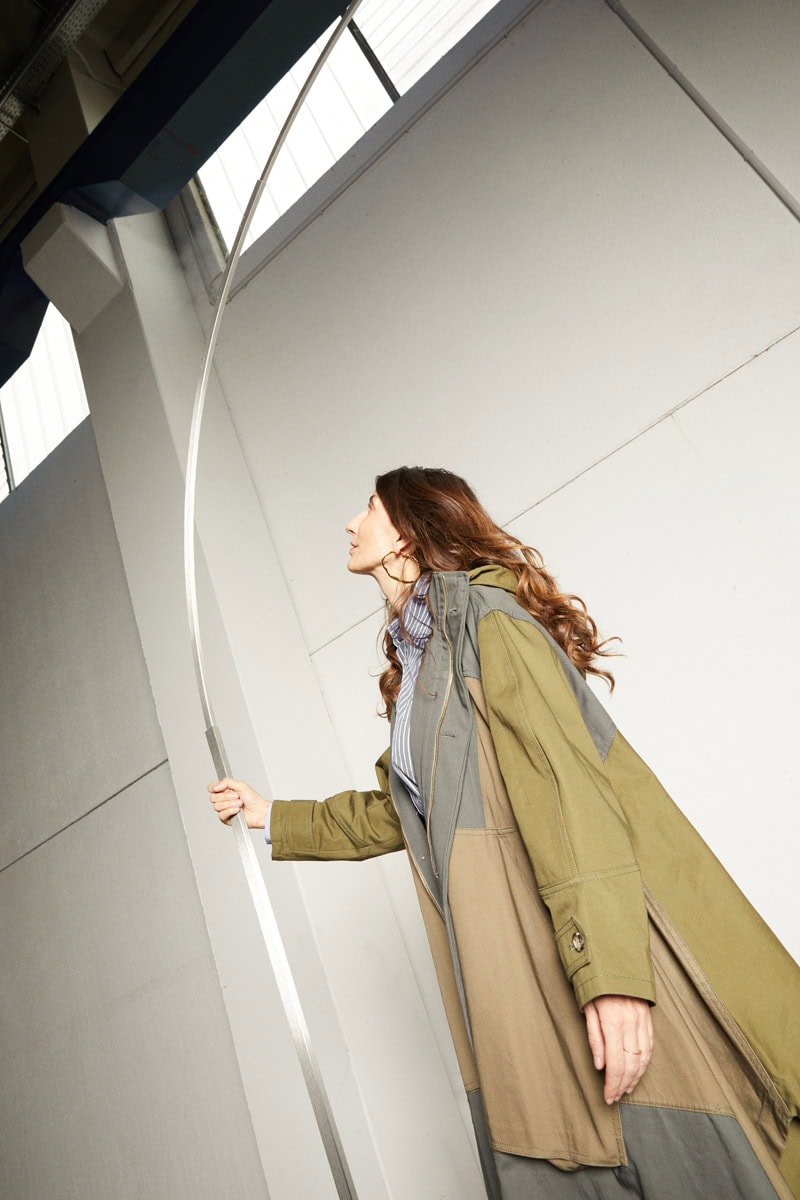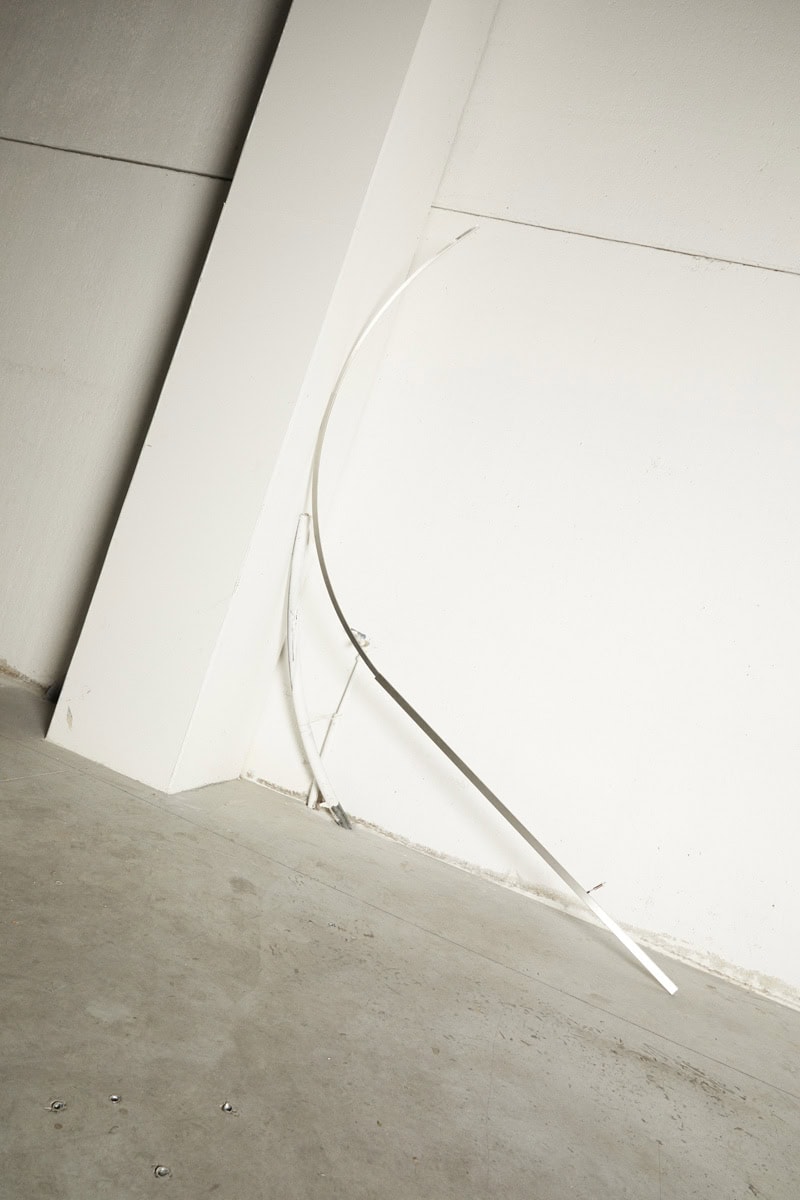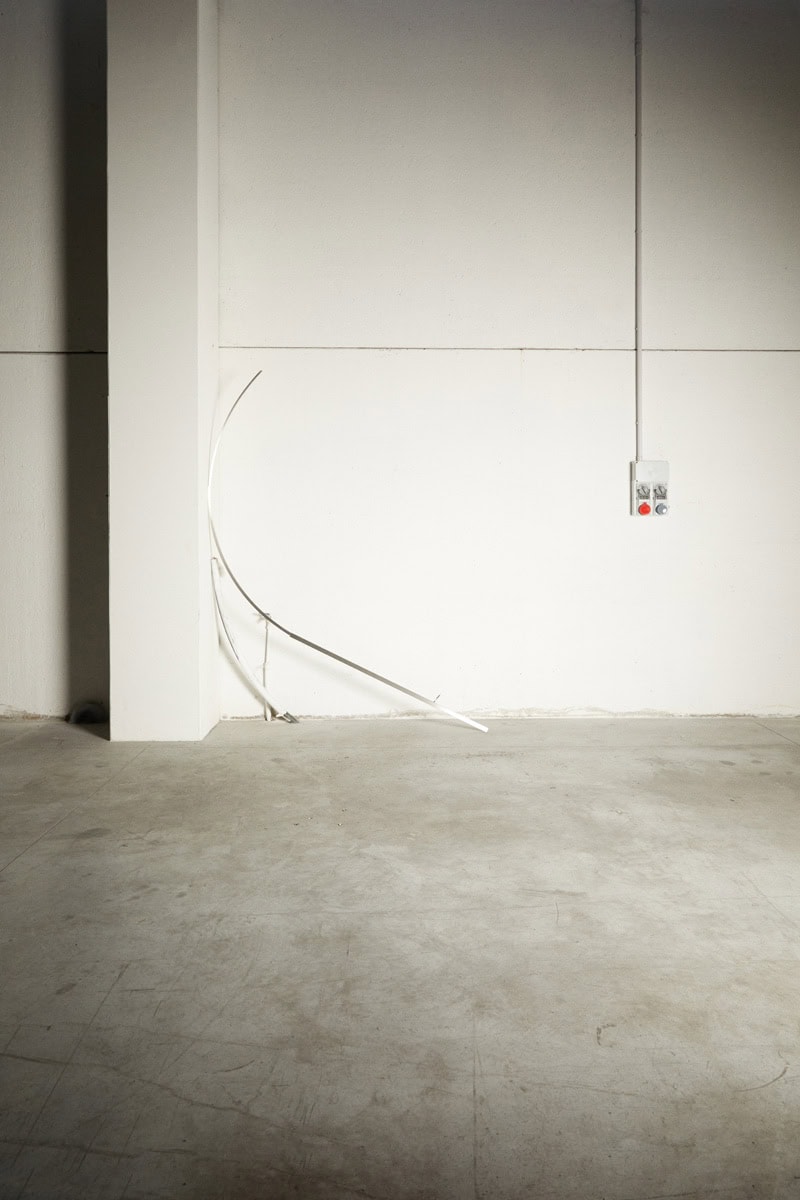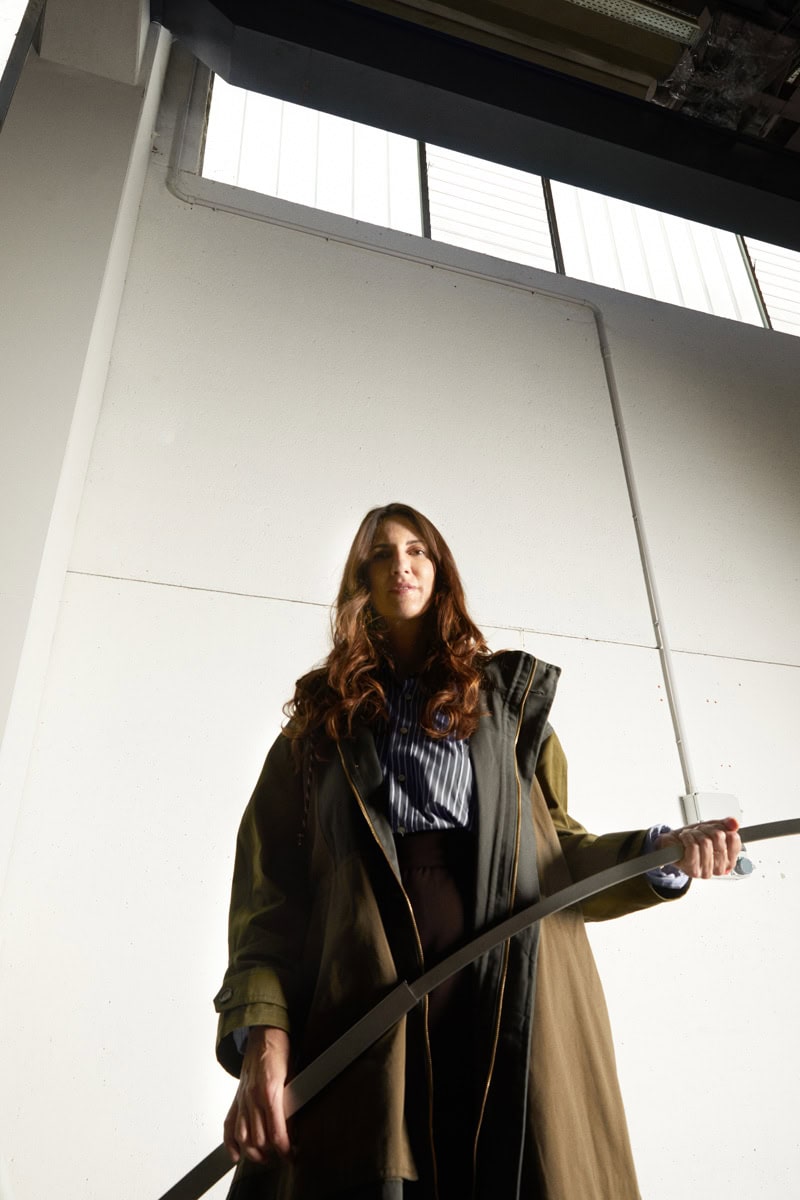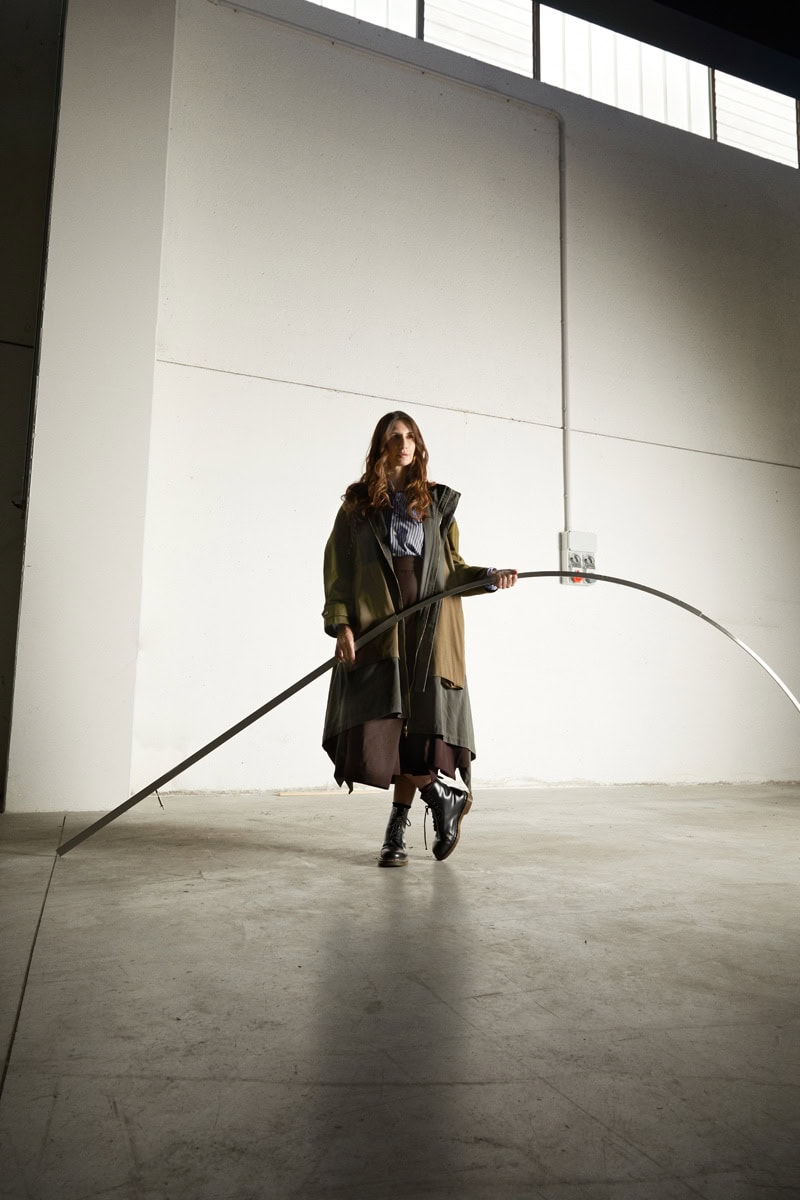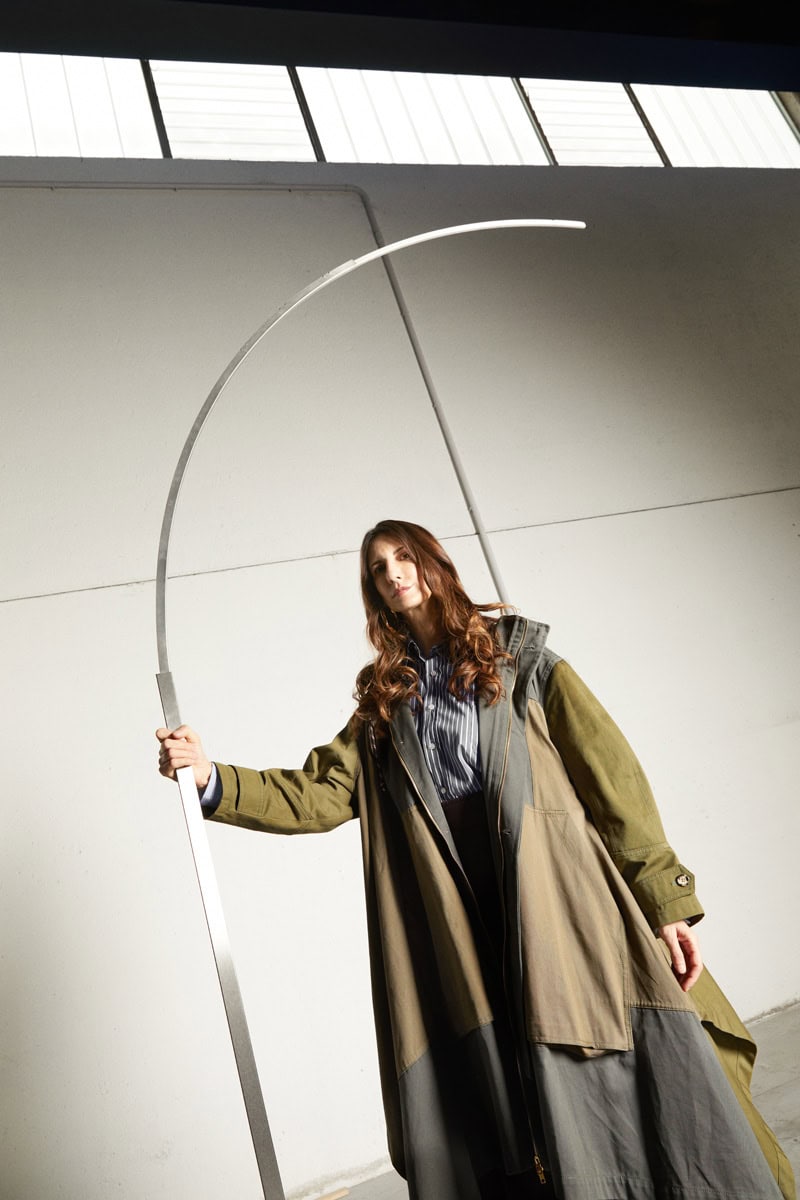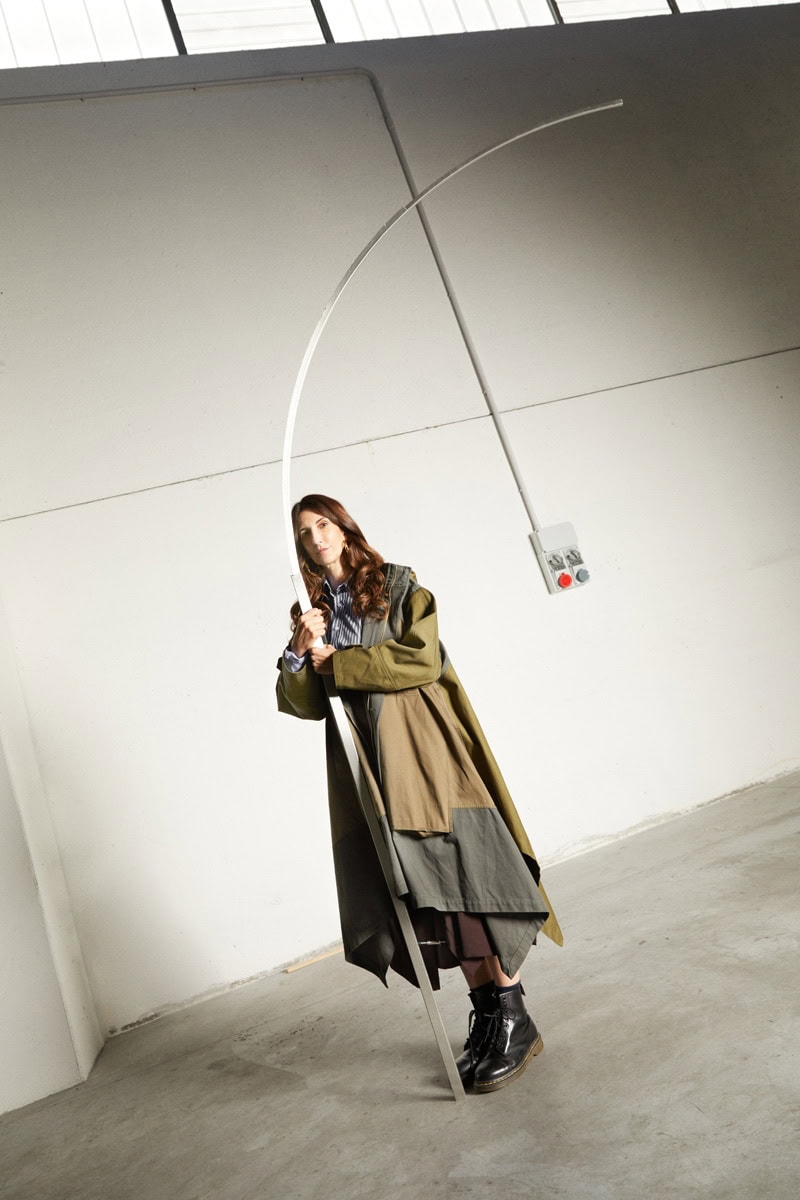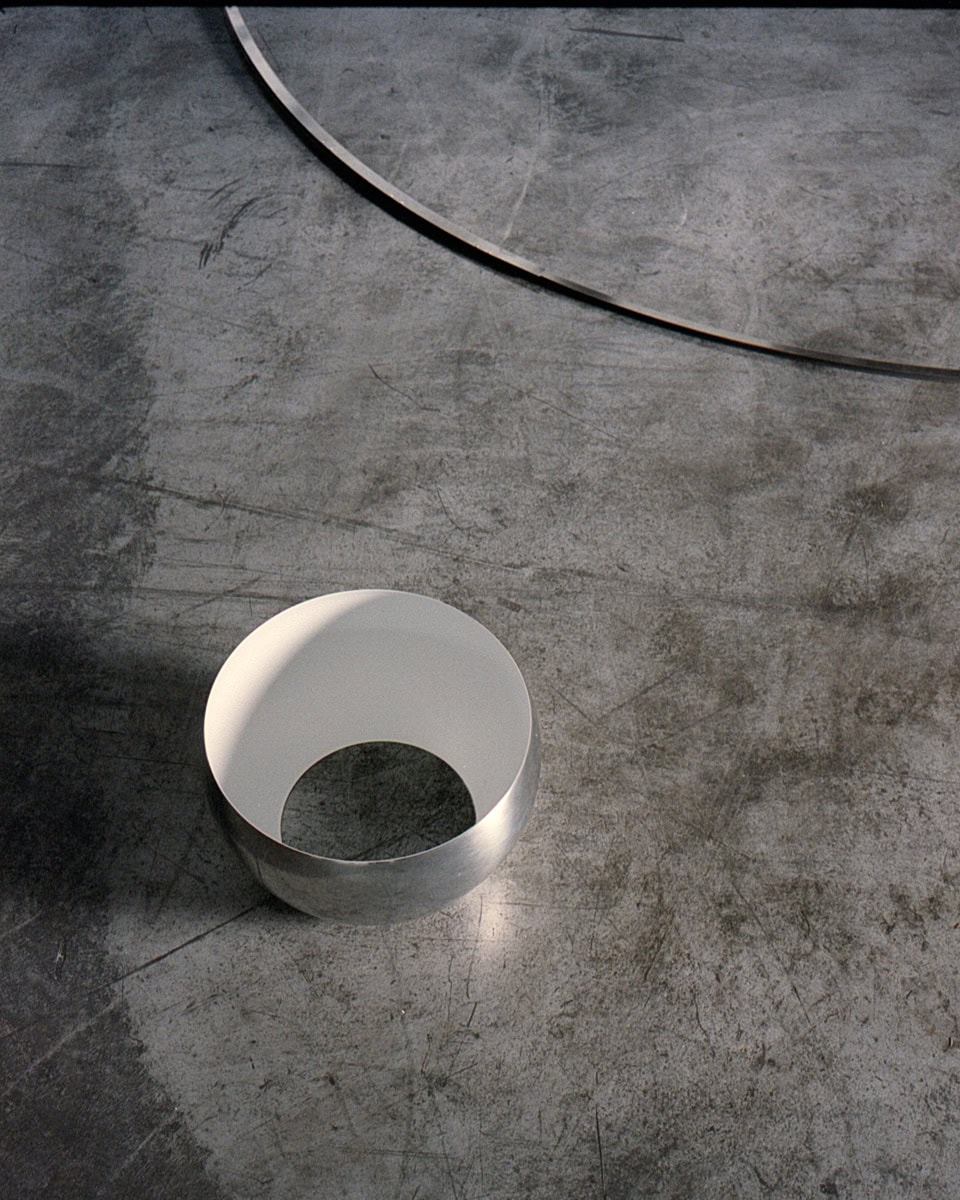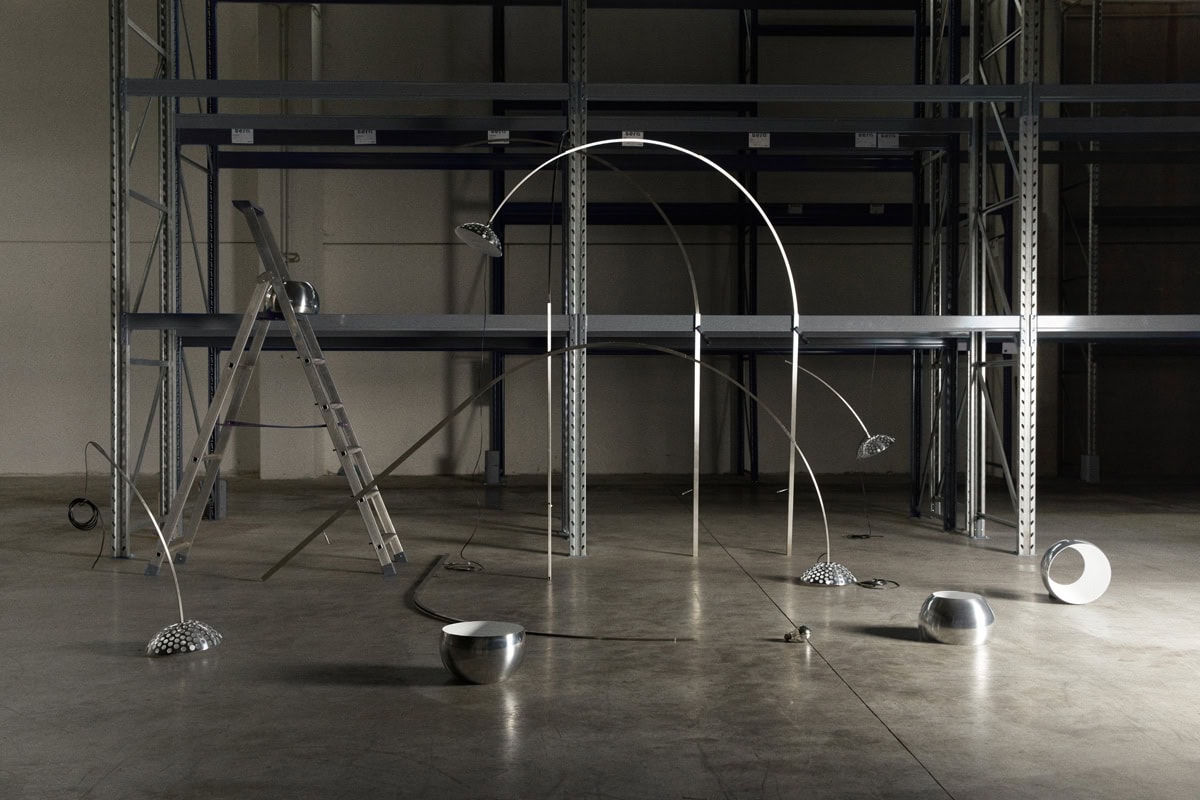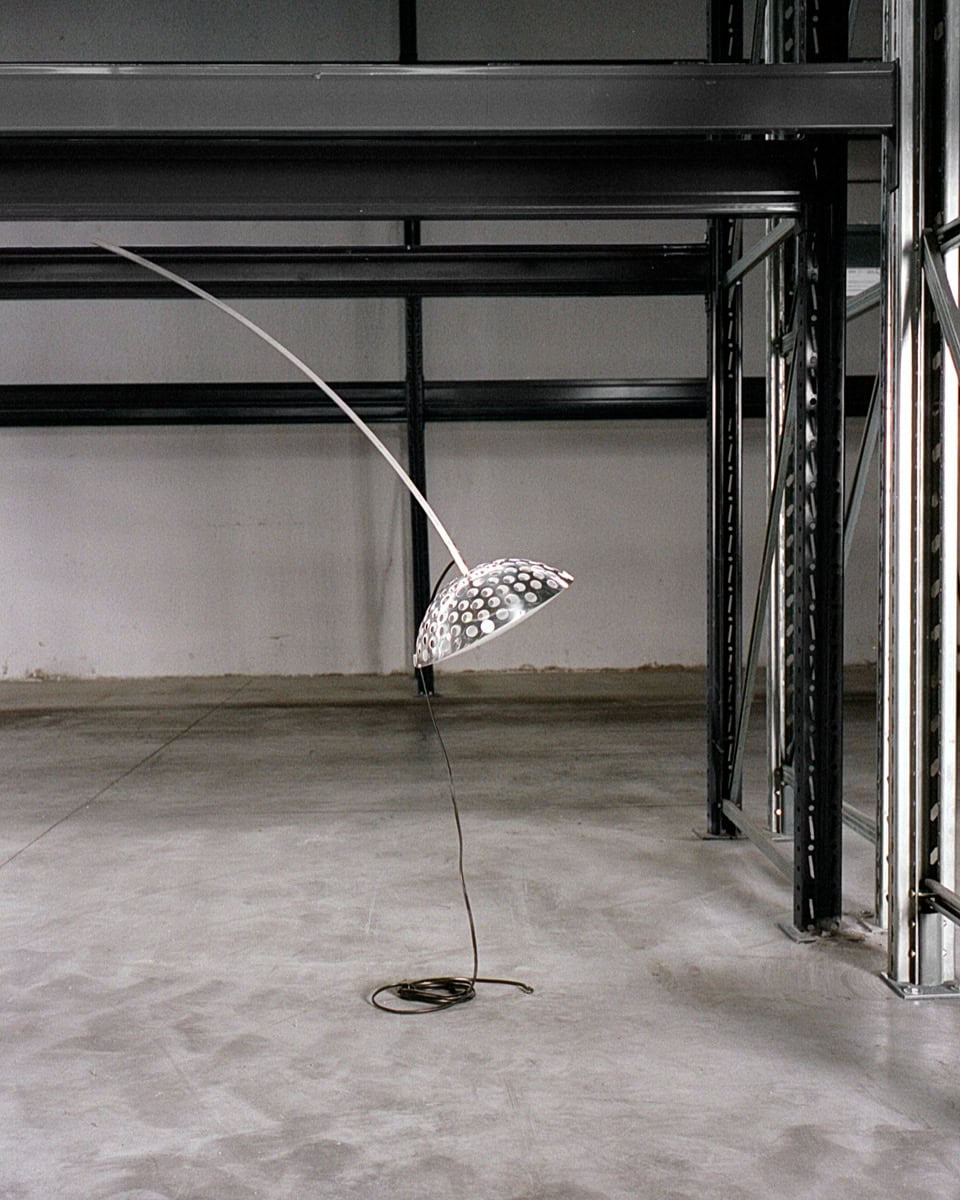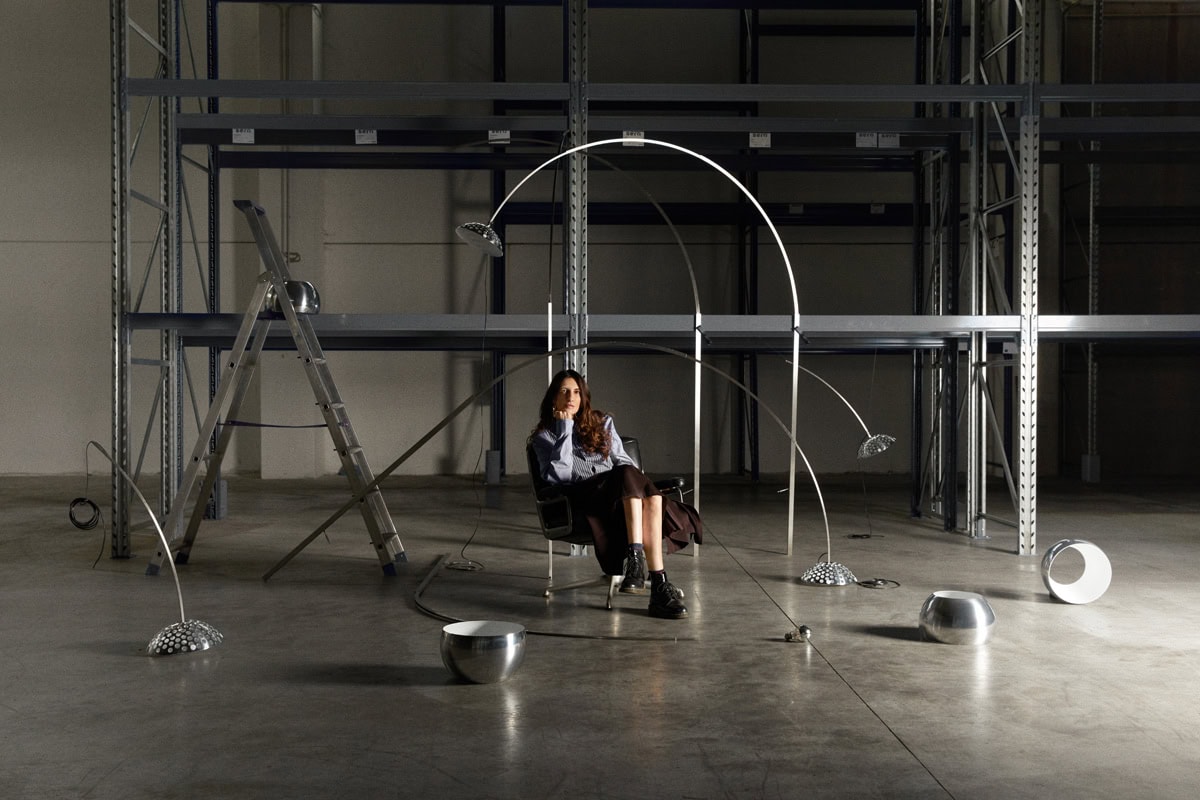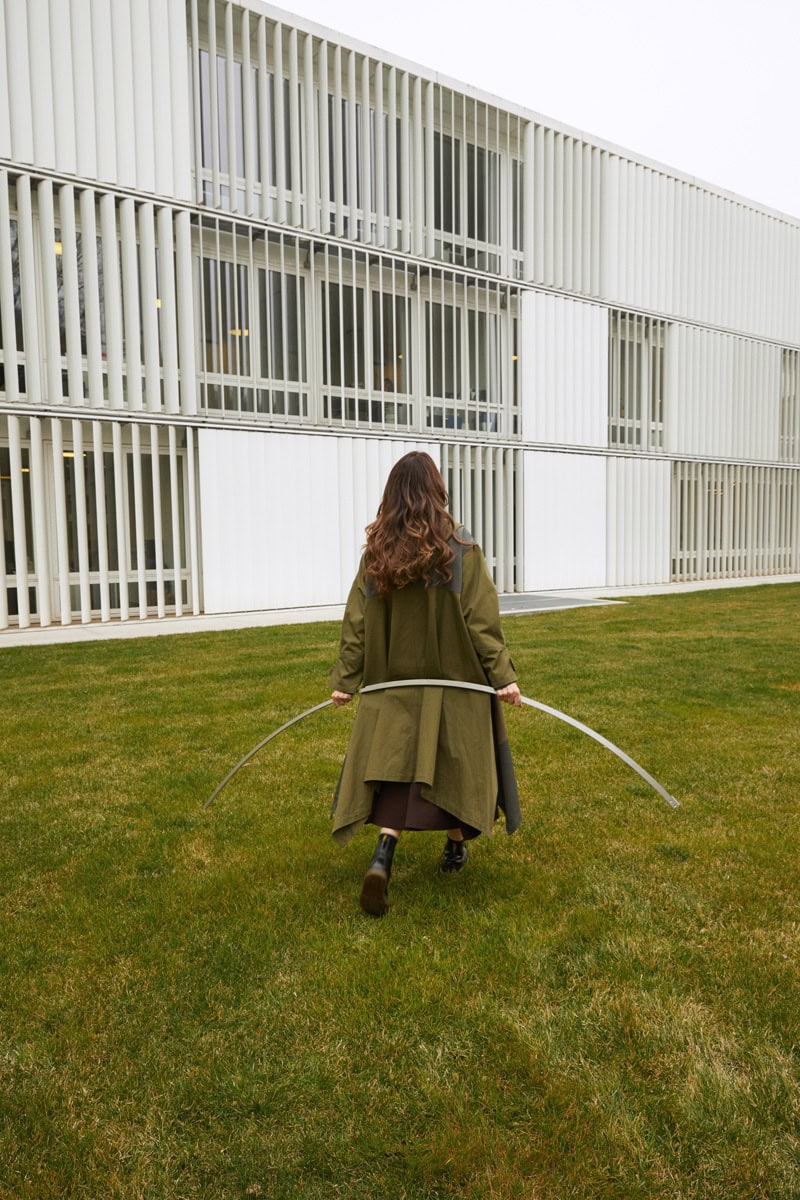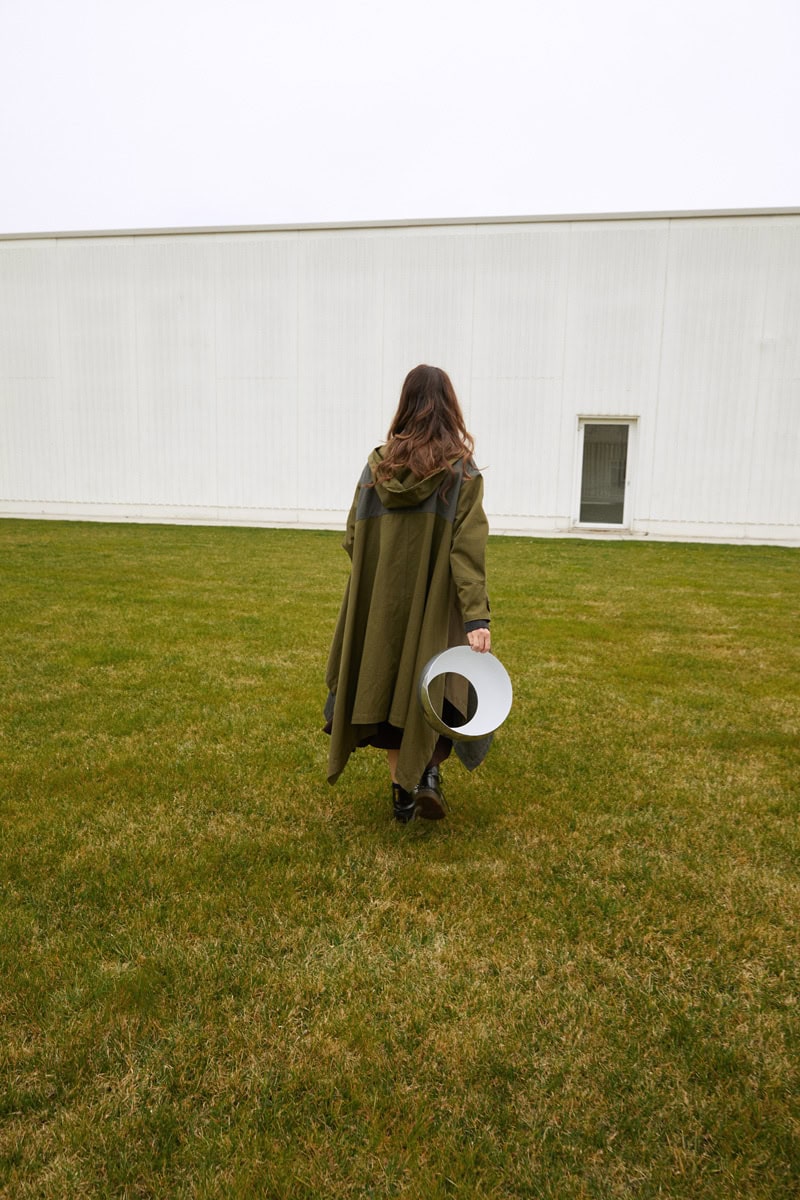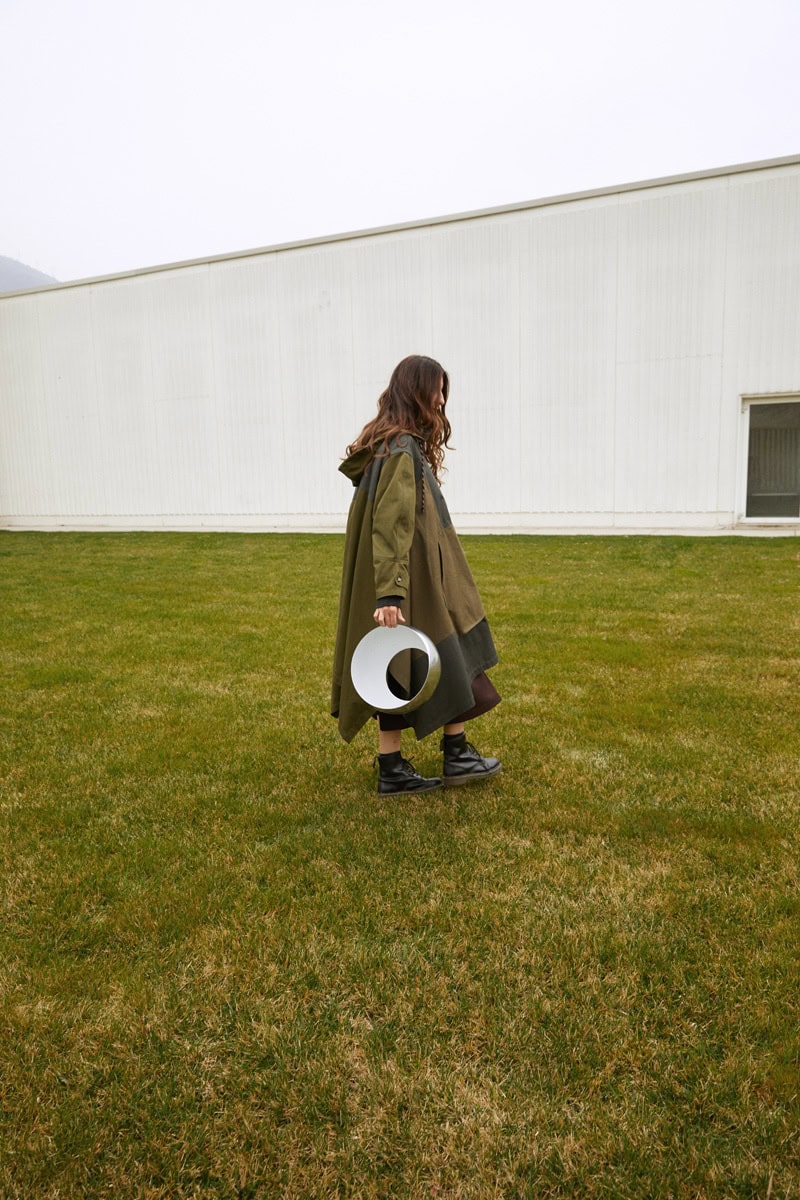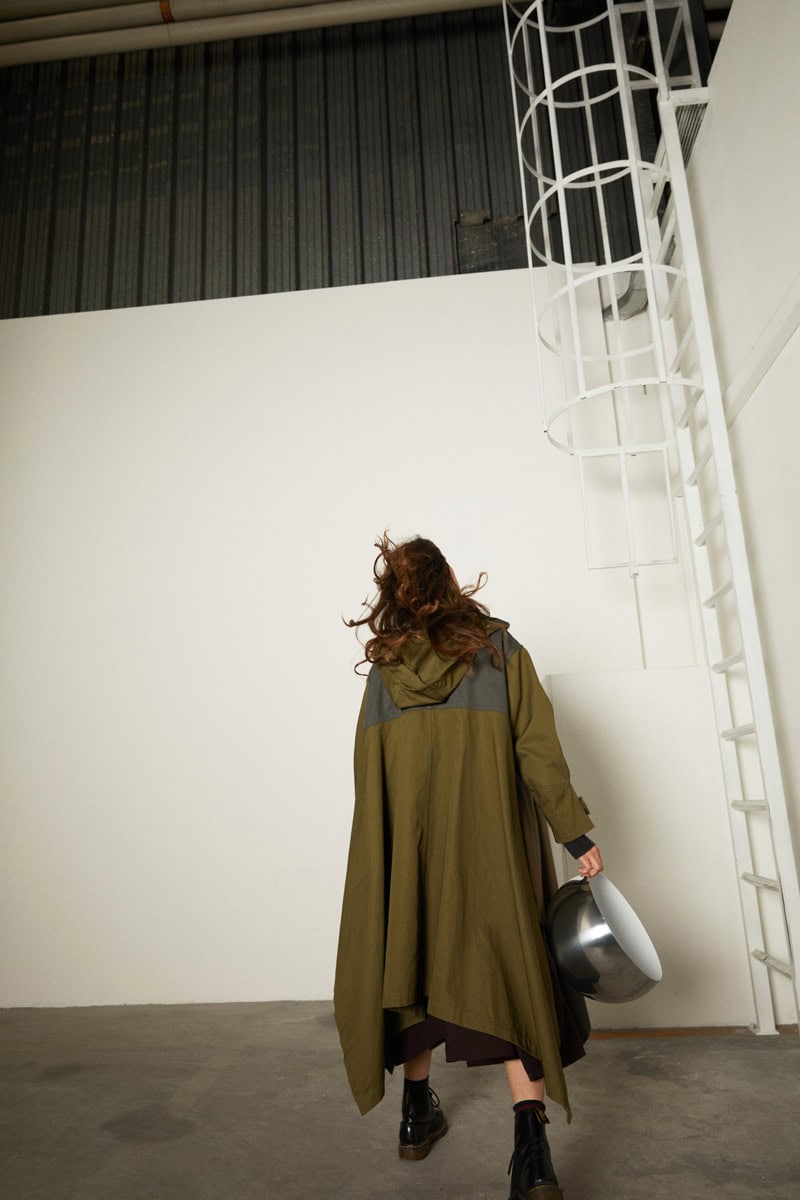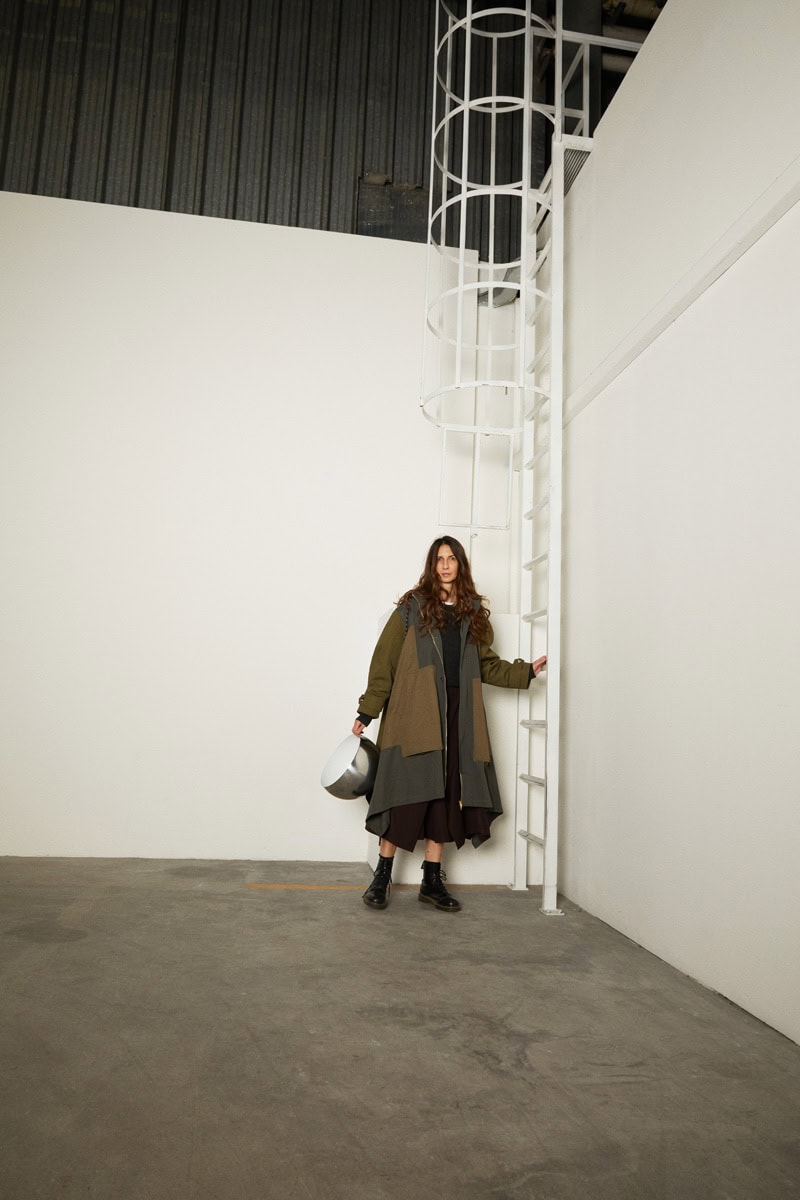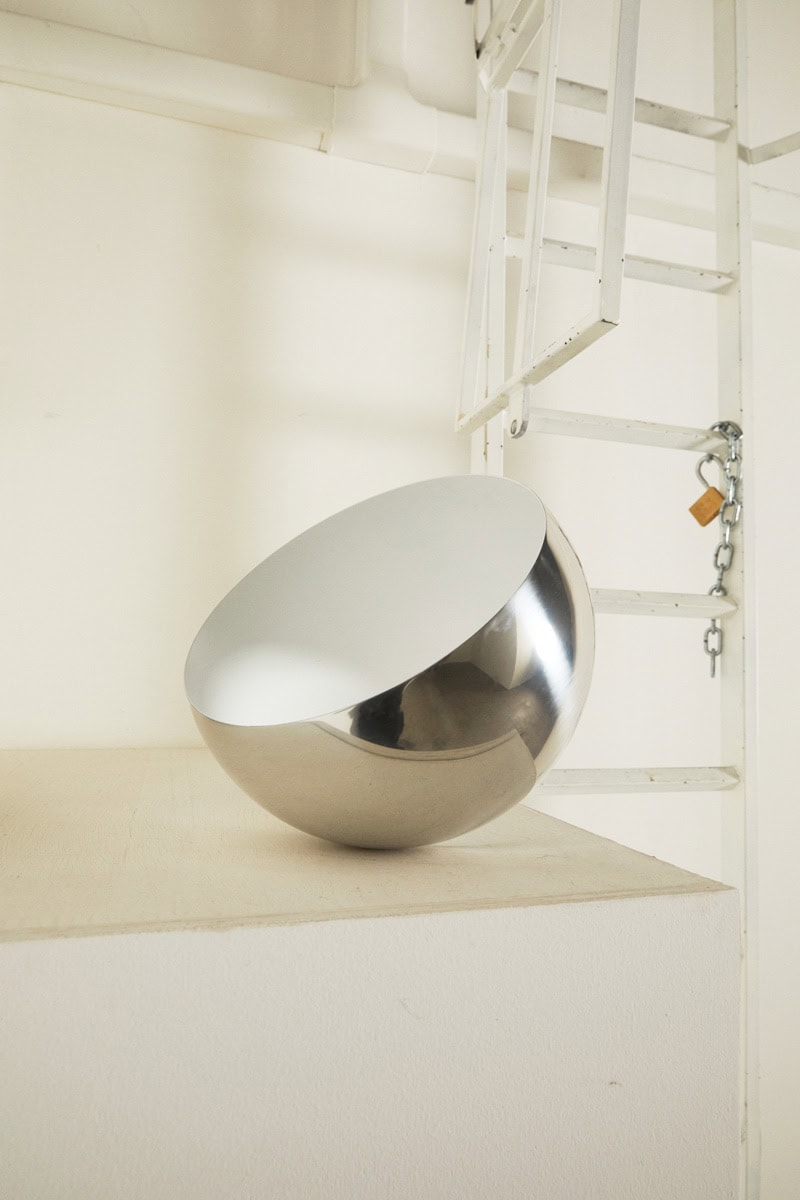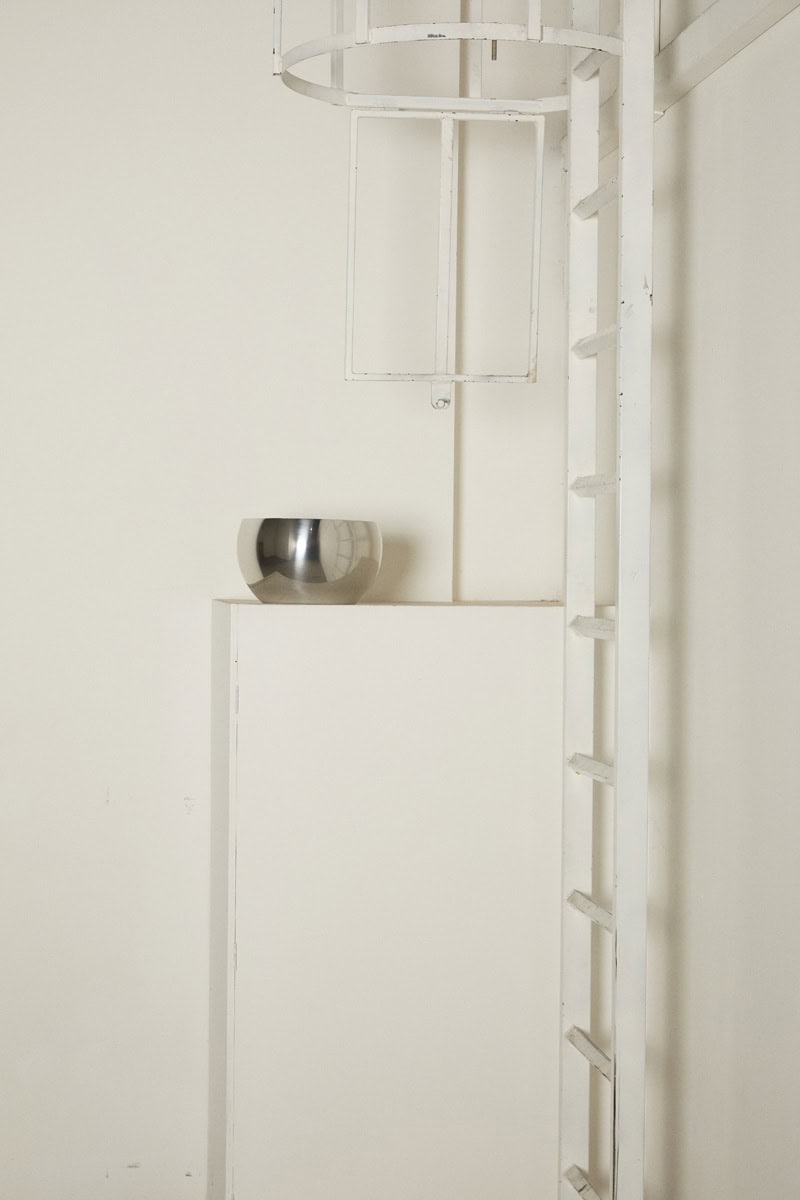In the past 20 years, the mass of information available online has grown exponentially. And with it, so have the quantity and effectiveness of the collaborative filters developed to select useful predictive data from the vast mass present on the internet. Already over 20 years ago, some researchers hypothesised overcoming the limitations of these algorithms, which read undifferentiated information about user interests—such as the sites they visit—by means of content-based filtering techniques or based on matching keywords. Matching, for example, the words included in an online magazine article with those in a user profile. This conversation with Barbara Corti, Marketing Director of Flos, starts with exactly that: an attempt to match the word seventy-two (which an algorithm might also read as a number).
GUIDO MUSANTE: ’72. Like Parentesi. Or was it ’71?
BARBARA CORTI: Hang on, let me clean my camera. I didn’t understand half the questions you sent me by the way. It would actually be ’71 for Parentesi. We celebrated its 50th anniversary with a special edition in 2021.
GM: And we’re off to a bad start! But we can still use 1972 to tackle the theme of re-editions. Let’s wind it back a second. Four years ago, I launched an open project called 1972- 2791. The aim was to develop a design communication method, which I called “conceptual inversion” and which I am currently developing with students at the Politecnico di Milano. It’s based on the empirical and anti-historical observation that 1972 was an ambivalent year, the point of rebound for a season that had lasted over 200 years: “modernity”. If ’69 were the last year before “one small step for man, one giant leap for mankind”, celebrated as the symbolic peak of modernity, then ’72 was the “post” year: post-modern and post-last step (the steps of Eugene Cernan and Apollo 17, to date man’s last mission to the moon, Ed.). A forward step certainly, transitory in transience: the last, and in theory, the last ever. Perhaps it is no coincidence that—whether consciously or not—from that year onwards, the main forms of creativity have grappled wit ith “returning” themes, whether language, styles, or icons.
BC: I’ll use that if you don’t mind…
GM: Fine by me.
BC: Speaking of Parentesi, I remember what you wrote about the re-edition curated by Konstantin (Grcic, Ed.).
GM: It’s odd to think that almost 10 years have passed. Even back then, the “new Parentesi” seemed to me an exemplary case in the context of product design. It perfectly synthesized the transition from “mechanical” light to “electronic” light; that is, from the incandescent light bulb to LEDs.
BC: In reality, even in this new technological context, the design process is far more about crafting and making than you might think. You wrote about how, when Parentesi was created, Steve Jobs was still fiddling with his first pieces of hardware in that famous Cupertino garage. I think that nerdy or geeky dimension is still very much a part of design today. We’re all mega nerds. And we still really like designing “off the cuff”. The Parentesi story is a good one because it’s about friendship and generosity: the relationship between Castiglioni and Manzù above all. The same skills that I see in Konstantin and in the whole R&D team working on the engineering and prototyping of our projects every day. Just as I see it in the artisan and industrial companies that support us in ventures that might sometimes seem a little crazy. An essential part of Flos’s strength lies in the “workshop” (or “garage”) process, which gives substance to the intuitions of our designers. I like to condense its meaning into the word “dare”.
GM: I find it so interesting that the precision of a product like the Parentesi re-edition stems from intuitive and fallacious processes, which are of course fundamental in terms of content and added value. Moreover, “dare” and “use” are terms that open many doors. According to Castiglioni, product design is very close to the concept of readymade or “object-trouvé”: objects that simply need to be given a new use, a second life. By daring. He himself, if I remember correctly, claimed to collect anonymous and found objects with an “intelligent design component”. That’s why his work tends not only towards the iconic and assertive but also (apparently) non-design: like the seat of a tractor found in a field or the taillight from a Fiat 500 abandoned in a junkyard on the edge of town. I think it’s extremely complex to work on an “object-trouvé” that is not only complex in itself, but decidedly design, so much so that it has become almost “untouchable” with time (and use). Parentesi is one example and Arco would be another.
BC: BC Every project is generated and “comes to you” in a kind of constant creative vein, linked to the creative theme of the readymade. A modus operandi closely connected to the way that Flos has operated from the beginning, just like Achille Castiglioni and Tobia Scarpa. Light, after all, is a very special world: the process that starts with the first idea and then leads to the product is truly complex and full of variables and internal phases, which remain invisible to the end user. Behind every solution is an obsessive quest to solve a problem and to respond to an initially unresolved need. Arco, for example, came from the idea of casting light over a table without having to drill a cable into the ceiling, something that has always been everyone’s worst nightmare—homeowners and interior designers alike—because it can affect the layout of the whole house.
GM: Speaking of Arco, something has just come to mind. When I moved house three years ago, I couldn’t make any holes in the walls, I had to lean everything up on the floor. I tried my hardest to damage the space as little as possible, leaving it just as I had found it, with the traces of the previous inhabitants. And I later discovered lots of people were living in exactly the same way, several of my friends mentioned it. If I look at Arco today and I think of Italian society in the 1960s, when there were still no divorce laws but the idea of family was subtly changing, then I see an object that interpreted the new sensibility of the times. It is a heavy object with presence, both in terms of the base itself and its visual impact: it fills the space and radiates light into the centre of the room, downwards and upwards. But all this happens with minimum intervention: simply by plugging a plug into the socket, without even touching the walls. And the base occupies such a small area of floor space, usually to the side of the room. In my opinion, this makes Arco a “sensitive object”, gifted with the ability to read humans, sometimes even before humans have read themselves. I believe that the reason we consider Arco a true “icon”, an often abused term, is thanks to its ability to interpret change: the bourgeois dimension and family condition that we all essentially belong to and which we feel more deeply today. The same thing could also be said of Toio, which I actually left behind in my previous house. When I moved into the apartment that has now become my studio, I chose to purchase a Kelvin Edge at a charity auction. Perhaps I needed the company of a domestic animal: I stroke her like a cat and she turns on, and peeks at me over the keyboard.
BC: I don’t think anybody has ever described Arco like that before, it’s a beautiful interpretation. Two years ago, it received the Compasso d’Oro’s Product Lifetime Achievement Award and Carlo (Castiglioni, Achille’s son, Ed.) was at the award ceremony. In his short acceptance speech, Carlo—who is less of a show-off than his sister Giovanna and looked a little shy on stage—said something very beautiful and moving, explaining that for him, Arco was like “a person”, with its own personality independent of the people who created and produced it. It really stuck with me; and perhaps it was then that the idea to build a new story for Arco, with a limited-edition release that will be launched during the Salone del Mobile, came to us and our design curators Fabio and Paolo (Calvi and Brambilla, Ed.). I think that the beauty of some objects lies in their ability to possess a personality; to enter our homes like domestic animals—to come back to the Andrea Branzi concept that you touched on earlier, that’s one of my favourite books of all time by the way—and generate a unifying, yet non-invasive mood, both powerful and very delicate. I believe that the affective and emotional relationship that we establish with certain objects can take on particular meaning and intensity in certain transitional situations: for example, if we move house multiple times and need to continually realign ourselves with the new domestic condition. A perennial transitional situation that is very common to the newer generations. At one time, surrounding oneself with objects in the home connoted status whereas it now corresponds with the tendency to live multiple lives in one. We have more things to represent us today because we have more things to say about ourselves. I think that’s the true contemporary attitude.
GM: Another point that I would like to mention is this “generational issue” which extends into design too. I believe, today more than ever, that every generation has the right to give it their best shot, but I ask myself how that’s possible nowadays. I ask on behalf of the very youngest designers and creatives, although perhaps even more so for those in the current “in-between generation”.
BC: Perhaps having an idea isn’t enough nowadays, perhaps you need an ideal. An idea can lead to any number of worthless things while you might do more interesting things if an ideal underpins your project. For example, the basis for the Arco design was not its physical base—initially envisioned in cement and then made from marble for structural and economic reasons—but the arch shape itself. The arch embodies an incredibly powerful gesture, created to solve a very precise and specific but beautiful function; almost a performance fixed in time. It makes me think of the gesture used to interact with ceiling lamps. Achille often said that when people touch a “lamp”, it’s not just to turn it on. Beyond the fact that the bourgeois context into which Arco was born has profoundly changed today, its design places it in a transgenerational and even transcultural dimension that today equally applies to a kid bombing down the slopes on a snowboard or skating at Milan’s Central Station. We are talking about the most famous lamp in the world, an object with such a strong history that we can deconstruct it, or at least re-interpret it without losing any of its spirit.
GM: Laying hands on icons born as revolutionary objects is not an easy task and I have always had great admiration for anyone who does so. It is an almost contradictory game: these objects have never looked back but in order to reinterpret them, you need to look back. A few years ago, I tried my hand at redesigning an icon, hiring thirty designers and/or artists to repair the same number of Superleggera chairs by Gio Ponti, which were partially unusable. The only rule was that the “repair” had to be visible. Behind an apparently iconoclastic facade, the project—which I called Supercolla—concealed a series of questions about the identity of objects and designers (and/or artists). Bizarrely, it all started with a falsely iconoclastic article I wrote about Achille Castiglioni on the day the big Triennale exhibition for his 100th birthday opened.
BC: I love it! And I agree with you. When it comes to re-editions, you need a bit of courage. Enzo Mari said that design is an act of war, not an armistice. And this act of war applies even when adopting a “soft” approach to design: design is always a tiring, muscular, assertive process. Achille was constantly waving his arms around in the air, almost like a circus performer, something straight out of a Fellini film. He talked to the body. If you want to design, you have to use muscle.
GM: In that sense, it’s really interesting to reveal the process and effort that go into certain evolutions or re-editions. It’s a huge theme, which I would connect with the vast new Cultural Sustainability scenario—the fourth and last of the Sustainability “families” —and with the development of the most suitable tools for communicating and promoting the fundamental elements of design/sustainability. Personally, I think we need to further and more “proactively” investigate the concept of “tradition”, a term (traditionally) disliked by “innovative” design, yet which has innate communicative power. In short, I really can’t wait to see what you are up to.
BC: Let’s just say, I don’t think we’ll go to design hell for it. Anything can happen, of course, but you’ve got to be brave, right? We’re not working on a “fixed” process, after all, but a methodology. That is, an action, which as a teacher you know all about, which allows you to map a path and then, in some way, to alter its direction. It is these scalable processes that allow a company today to optimise and invest and continue to push research and development: which Flos does, in a truly significant way.
GM: To interpret the road well-trodden, you have to create a new section of road…
BC: Right. And now I can’t possibly say anything more.
